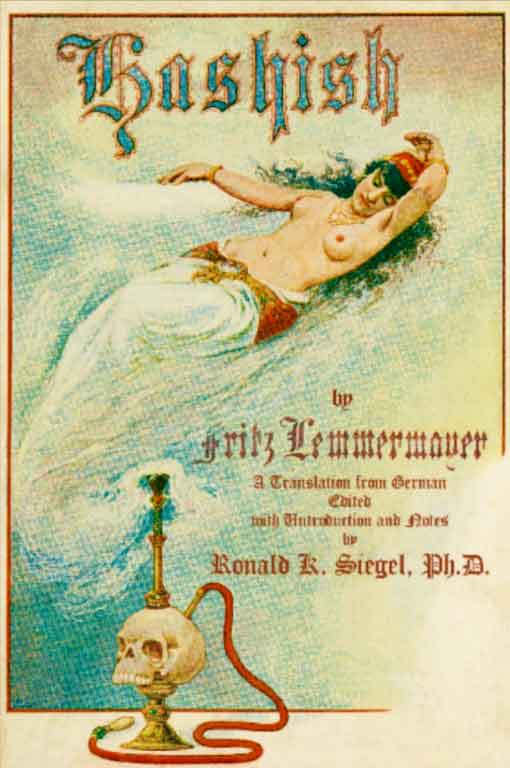 By FRITZ LEMMERMAYER, RONALD K. SIEGEL (Process Media; 2013)
By FRITZ LEMMERMAYER, RONALD K. SIEGEL (Process Media; 2013)
A most interesting relic from late 19th Century Germany, rescued from obscurity and translated into English by Ronald K. Siegel. It’s not quite the timeless masterpiece Siegel makes it out to be, but Fritz Lemmermayer’s HASHISH is certainly a strange and fascinating concoction combining elements from the ARABIAN NIGHTS inspired Oriental fantasies in vogue at the time and the nearly-as-popular drug literature of the era.
…a strange and fascinating concoction combining elements from the ARABIAN NIGHTS inspired Oriental fantasies in vogue at the time and the nearly-as-popular drug literature of the era.
Allegedly based on an Oriental legend, HASHISH is set in Algeria, where the pure-hearted Ali is in love with the luscious Zuleyka, despite the fact that the two are members of warring tribes. Love, however, wins out…or so it seems. One day Zuleyka attempts to bathe in an alleged fountain of youth, where she’s spied in the nude by the wealthy slimeball Rustan, who promptly becomes determined to make Zuleyka his own. Wasting no time acting on his obsession, Rustan invades Ali and Zuleyka’s wedding ceremony, killing Ali’s father and kidnapping Zuleyka.
Ali is left understandably dispirited. He’s approached by a shady personage who introduces himself as Yusuf and turns Ali on to the joys of smoking hashish. Under its influence Ali finds “the things of reality mingled with the phantoms of his dreams. The nebulous structures took on tangible shapes and forms, the boundaries between being and seeming had vanished.” Following this epiphany Ali becomes a fierce lover and warrior, fighting a number of fierce battles under the ever-present eye of Yusuf and winding up as nothing less than the “lord of the world.” Yet he can’t forget Zuleyka, nor she him.
The eventual “twist” isn’t exactly difficult to foresee, and nor is it any big trick figuring out Yusuf’s true identity. I’ll also complain about the unsatisfying manner in which Zuleyka’s dramatic kidnapping is resolved (hint: it occurs entirely off-screen). Enjoyable though this tale is, its narrative often leaves much to be desired.
One element I will unreservedly praise is the book’s design by Process Media.
One element I will unreservedly praise is the book’s design by Process Media. The original 1898 edition’s gorgeous cover art has been retained, as have the original black and white illustrations by G. Sieben, which are eye-popping. There’s also a highly authoritative introduction by Siegel that traces the complicated lineage of HASHISH, which after nearly a full century of neglect is back with us, like it or not.
